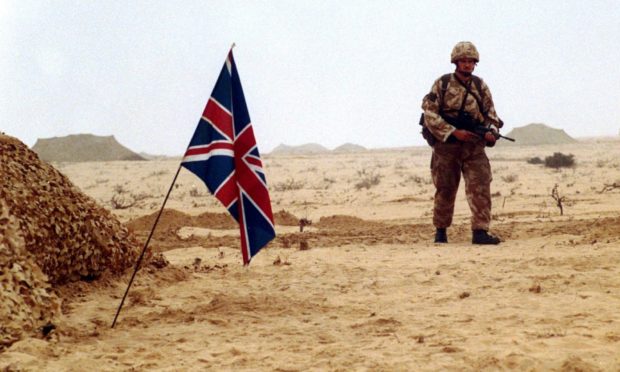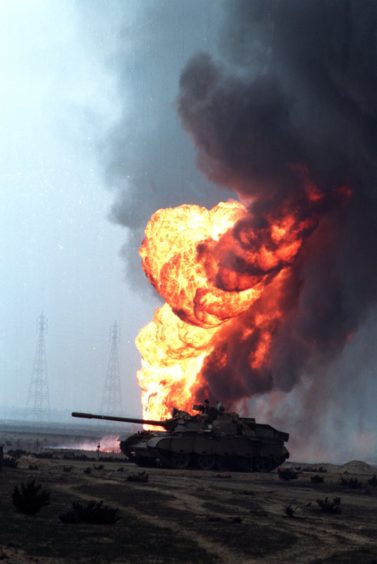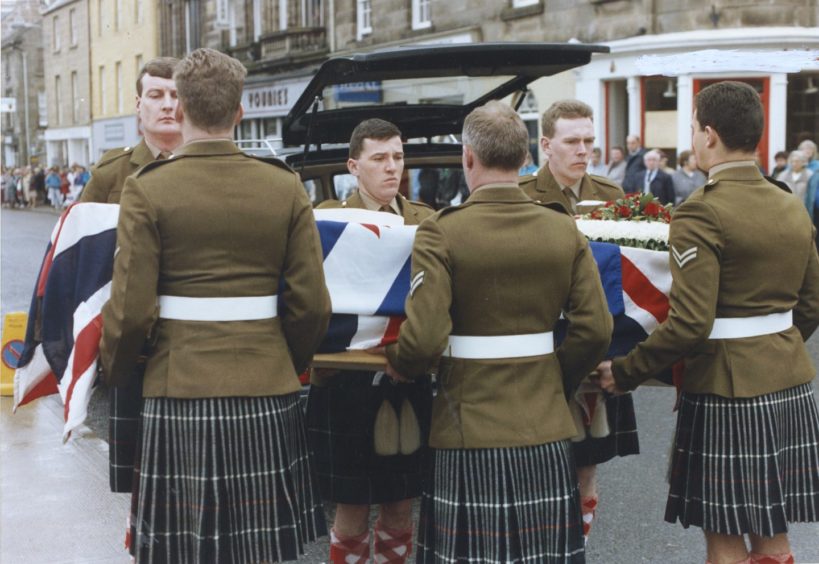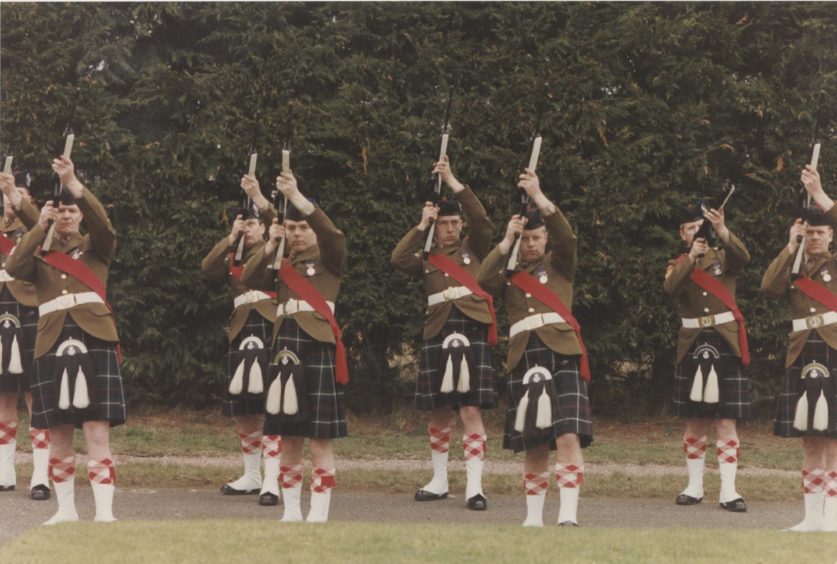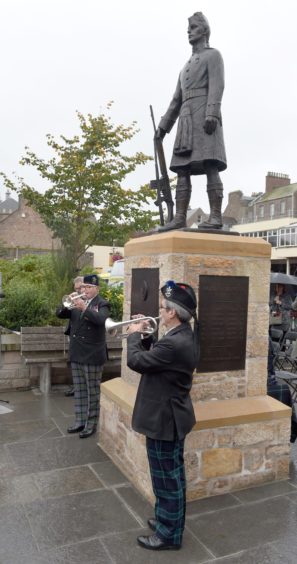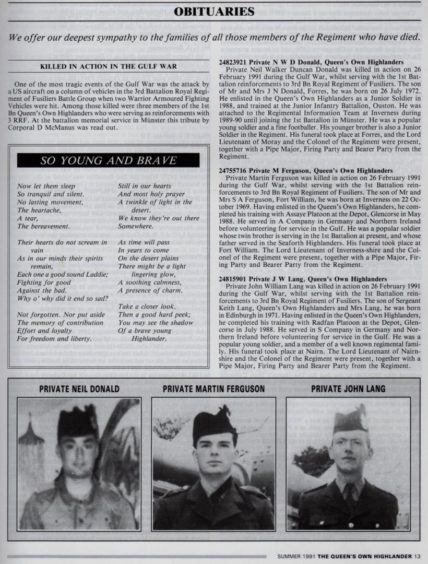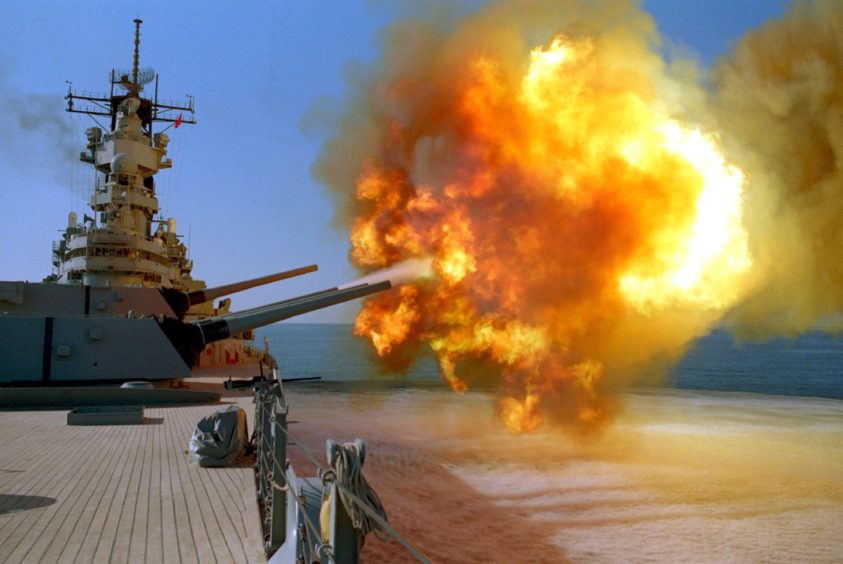A young Highland soldier wrote home of the “horrors” of the Gulf War just days before he and his two teenage comrades were killed in friendly fire.
These were among the final, moving letters written by the three courageous lads to their families.
Private Martin Ferguson, a 21-year-old from Fort William, wrote a “soldier’s poem” and spoke of “the horrors which haunt you each day”.
The doomed soldier anticipated “the crunch was coming” in missives that arrived two days before he lost his life 30 years ago on February 26 1991.
The former Lochabar High School pupil was among the 400-strong contingent from the Queen’s Own Highlanders sent to the Gulf in early December.
His brother Clark, who was also a private in the Queen’s Own Highlanders, also went to serve in Iraq because “he missed his twin”.
Pte Ferguson had signed up to serve for a further year but said in one of his last letters back home that he did not intend staying on longer than that.
Pte John Lang, 19, from Nairn, “had always wanted to follow his father into the army” but missed his family.
He was planning to leave the army in a year and find work in the police or fire brigade because he was missing his fiancée and his two-year-old son.
He told her his only wish was to be back home.
Military tragedy was sadly no stranger to Pte Lang’s family.
His uncle had been killed in a helicopter crash while serving with the regiment during The Troubles in Northern Ireland in 1979.
Meanwhile, Pte Neil Donald, 18, from Forres, sent a letter back home from the front line and suggested to relatives that he could be involved in close fighting.
Sickeningly, he did not die at the hands of Iraqi fighters but from an allied attack on its own troops.
Friendly fire
The attack killed nine young soldiers from the Queen’s Own Highlanders and the Royal Regiment of Fusiliers, including Privates Ferguson, Lang and Donald.
The soldiers were mistakenly killed by guided missiles launched from a pair of American A-10 “tankbuster” aircraft.
It mistook Warrior armoured vehicles for Iraqi tanks.
The scandal of the friendly fire death count was to become a dominant talking point of the war.
A tentative ceasefire was declared two days later and the guns fell silent.
The Gulf War was all but over, but not for the families of the fallen soldiers and the tight-knit Highland communities who rallied round them.
The build-up
The desert conflict, sparked by the illegal Iraqi occupation of oil-rich Kuwait on August 2 1990, saw the biggest deployment of British troops since the Second World War.
By January 1991, more than 50,000 UK personnel joined a US-led coalition of 35 nations poised for action, in what was to become a battle of air, land and sea.
Among the boots on the ground were The Queen’s Own Highlanders.
Pte Ferguson, Pte Donald, and Pte Lang, in the 4th Armoured Brigade, found themselves on the cusp of a crucial desert advance that would clinch victory, but with tragic consequences.
The Highlanders formed part of the British Army’s Desert Rats 1st Armoured Division in the tactical ‘four-day’ war, waged against a backdrop of burning oil fields.
Op Granby was the British offensive beginning on January 16, and the culmination of months of air patrols carried out by the Royal Air Force, which had deployed its Tornado F3 jets within days of the initial Iraqi invasion.
After an intensive 38-day air campaign, tensions rose and diplomacy crumbled: Iraq had until 5pm on February 24 1991 to withdraw.
But the 11th hour ultimatum issued to Iraq’s President Saddam Hussein failed.
As panicked Iraqi forces set fire to oil wells, the young Highlanders waited in the wings for what was described at the time as “the best planned operation in military history”.
The ground advance
On February 24, “G-Day” had arrived.
With air and naval support, the British and coalition forces swept in on three fronts led by Allied commander-in-chief General Norman “Stormin’ Norman” Schwarzkopf.
In one of the most remarkable feats in British military history, the 1st Armoured Division advanced 180 miles left into Iraq in just 66 hours, outwitting Saddam’s battered war machine.
But celebrations soon turned to sadness when the US jets fired those fatal missiles on the afternoon of February 26 1991.
Aftermath
Immediately a major investigation was launched to find out why the Warrior vehicles had been mistaken for Iraqi targets.
While closer to home, calls were made for a fitting tribute to the young lives lost.
In the days after the ceasefire, Newtonmore councillor Sandy Russell, who had fought in the Queen’s Own Cameron Highlanders in the Second World War, suggested a plaque should be installed in Inverness.
The fallen soldiers’ names feature on a roll of honour at Fort George in Inverness, which also houses the Queen’s Own Highlanders’ regimental collection.
And in 2019, a striking statue was unveiled in Bank Street, Inverness, recognising the sacrifices made by the 14 Queen’s Own Highlanders killed in the regiment’s 33-year history.
Taking the form of a bronze ‘Jock’, the poignant monument also bears the name of the fallen comrades.
Legacy
Privates Donald, Ferguson and Lang are never far from the thoughts of fellow Queen’s Own Highlanders, and despite ongoing Covid restrictions, individuals will still pay their respects.
Lieutenant Colonel Bob Towns MBE, chairman of the Highland Branch of the Queen’s Own Highlanders Regimental Association, said it’s important to pay tribute 30 years on.
He added: “The lives lost over there are always in our memories and we will remember them.
“Normally we’d be having a parade at each graveside in Forres, Fort William and Nairn, but under the circumstances that is not allowed.
“Individuals will be paying their own respects.”
Timeline
August 2 1990: Iraqi troops invade Kuwait, taking the emirate in one day.
August 6: The United Nations Security Council demands an “immediate and unconditional” withdrawal of Iraqi troops and orders a trade boycott.
August 8: The US launches Operation Desert Shield. Baghdad announces Kuwait is now part of Iraq.
October 17: Western troops in the Gulf number 200,000 US troops, 15,000 UK troops and 11,000 French troops.
November 29: The UN Security Council says Iraq must voluntarily withdraw from Kuwait by January 15 1991. It authorises “all necessary means” to force Iraq out if it does not comply. Baghdad rejects the “ultimatum”.
November 30: US President George Bush invites Iraq to join direct talks.
January 15 1991: Iraq ignores the UN ultimatum.
January 17: Operation Desert Storm is launched, with air attacks on Iraq and Kuwait.
January 29: The US and the Soviet Union offer to declare a ceasefire if Iraq pledges to withdraw from Kuwait.
February 24: President Bush announces the start of a ground operation. Allied forces commander General Norman Schwarzkopf says it is a “spectacular success”.
February 26: Saddam Hussein confirms a Radio Baghdad report that Iraqi troops have been ordered to retreat from Kuwait.
February 27: The first Kuwaiti troops enter Kuwait City and President Bush announces the liberation of Kuwait.
February 28: Iraq accepts all UN resolutions.
